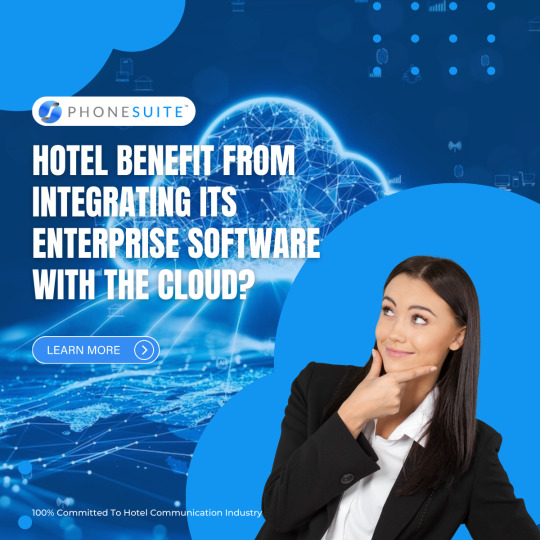#integrated technology systems
Video
undefined
tumblr
Salvage technology animation - how underwater archaeologists salvage one of the world's largest and most well-preserved ancient wooden shipwrecks, Yangtze River Estuary No.2
#china#fun#technology#archaeology#video#non-contact integral transfer technology of arc beam#multi-axis motion control system#synchronized motion#flexible#i'm not a machinery and gear person but this is satifying to watch#music#pack the whole ship and take it away
77 notes
·
View notes
Text

USA 1997
#USA1997#INTERACTIVE MAGIC#CHARYBDIS ENTERPRISES INC.#DIGITAL INTEGRATION LTD.#ADANAC COMMAND SYSTEMS#DAGGER INTERACTIVE TECHNOLOGIES#ALLIANCE INTERACTIVE SOFTWARE INC.#KESMAI CORPORATION#SIMULATION#STRATEGY#IBM#HIND#AIR WARRIOR III#DESTINY#IMA12 ABRAMS#AMERICAN CIVIL WAR FROM SUMPTER TO APPOMATTOX#HARPOON CLASSIC 97
9 notes
·
View notes
Text

Hotel benefits from cloud-enabled enterprise software, as they can access their reservations or hotel services quickly and securely. Hotel owners benefit from integrating PhoneSuite Voiceware Enterprise Software with the cloud because it offers a scalable solution. Read More...
#hotel cloud integration#cloud integration#cloud pbx#cloud based system#cloud Computing#Cloud pbx system#Unified Communications#voip voiceware#hotel phones#phone system#phone calls#phonesuite voiceware#voiceware by phonesuite#hotel phone installation#hotel pbx#voip pbx#phonesuite pbx#voiceware pbx#cloud technology#Voiceware#Hotel VoIP#phone suite phone system#hotel hospitality#hotel industry#hotel phone#pbx phone system#phone pbx system#phone systems#phonesuite#SIP Trunking
8 notes
·
View notes
Text

PhoneSuite is leading the industry with its revolutionary CRM integration that are designed specifically to help hotel marketers succeed with integrated marketing automation tools, communication suite reduction capabilities, data synchronization features, and more – let’s dive into how our Hospitality CRM Integration can take your hotel marketing to the next level. Read More....
#PhoneSuite’s Hospitality CRM Integration#Hospitality CRM#VoIP & CRM Integration#Unified Communications#CRM#phonesuite direct#phonesuite dealers#PBX System#VoIP#VoIP Phone#VoIP Advantages#Hotel Phone System#IP telephony#Ip Pbx System#Cloud Pbx System#Managed Voice#Pbx System in Texas#VoIP Phone System#VoIP technology#Telephony solutions#PBX Communications#SIP Trunks#Voice call#Voice Calls#Modern Telephone#VoIP Telephone#hotel hospitality#hotel VoIP#phone pbx system#Business Phones
5 notes
·
View notes
Text
B2C Travel Portal - B2C Travel Portal Development

SoftwareXprts is a team of 50+ experts working towards becoming a website designing & Development company in Canada, India, the USA, UAE & Saudi Arabia. We offer online travel portal development, best travel api provider, and online ticket booking system.
Our Services:-
best travel technology company
best travel portal development company
b2b travel portal development
b2c travel portal development
flight booking api
flight api
hotel api integration
car booking api
gds api integration
travel mid office solutions
online ticket booking system
#b2b travel portal development#b2c travel portal development#b2b travel portal#b2c travel portal#online b2b travel portal#flight booking api#flight api#hotel api integration#car booking api#car rental api#best travel api provider#gds integration#gds api integration#amadeus api development#travel mid office solutions#travel software solutions#best travel technology company#online travel portal development#RPA service provider#online ticket booking system#best travel portal development company#travel booking software
2 notes
·
View notes
Text
#it company dubai#dubai#ip pbx dubai#Hotel PBX#Hotel phone system#PBX for hotels#Hospitality communications#Hotel management software#Guest communication#Internal call management#Hotel telephony#PBX integration#Hotel technology
0 notes
Text
IVRS vs. Traditional Phone Systems: A Detailed Comparison for Small Businesses
When choosing between an Interactive Voice Response System (IVRS) and a traditional phone system, small businesses need to consider various factors, including cost, efficiency, customer experience, and scalability. Here’s a detailed comparison of IVRS versus traditional phone systems:
IVRS (Interactive Voice Response System)
Advantages:
Automation:
IVRS automates call handling, allowing…

View On WordPress
#24/7 Customer Support#Automated Call System#automation#Business Automation#Call Analytics#Call Management#Call Routing#Cost Savings#CRM Integration#Customer Experience#Customer Service#Efficient Communication#Interactive Voice Response#IVRS#Multilingual Support#Office Phone System#Phone System Integration#Professional Image#Small Business Solutions#Voice Technology
0 notes
Text
The Best Eco-Tech Products for an Energy-Efficient Home
Introduction
The newly developed innovations regarding eco-tech products have become necessary when building an energy-efficient house. Yet such innovation does not only lead to energy consumption reduction but also pulls efforts towards a sustainable future. Well, TechtoIO is forever committed to bringing the latest eco-tech products that make your home smarter, greener, and more performant. Here are the top products to make your house a comfortable and efficient sanctuary.
Now, with the Smart thermostats are one of the game-changers in energy-efficient homes. They learn your habits and optimize the temperature based on your habits and preferences so energy isn’t wasted when you’re not around. Among other smart devices, energy usage reporting with remote control in some popular monitored models include Nest Learning Thermostats and Ecobee SmartThermostat with voice control.
Optimized with significant energy savings, courtesy of smart thermostats, the efficiency of heating and cooling systems can increase. Read to continue link
#Eco-Tech#Tagsbenefits of smart thermostats#best eco-tech products 2024#best LED lighting options#eco-friendly home products#electric vehicle charging stations#Energy Star rated appliances#energy-efficient lighting solutions#home energy monitoring systems#how solar panels work#integrating smart home devices#reducing home energy consumption#smart home energy management#smart irrigation systems#smart plugs and power strips#smart thermostats for energy efficiency#solar panels for homes#sustainable home technology#top energy-efficient appliances#water-saving devices for homes#weatherproofing for energy efficiency#Technology#Science#business tech#Adobe cloud#Trends#Nvidia Drive#Analysis#Tech news#Science updates
1 note
·
View note
Text
#Voice-controlled home automation#Remote home control#smart home automation system#home automation dubai#home automation systems#smart home company#smart home automation#tech dubai#tech companies in dubai#tech company dubai#Smart home integration#elan automation#smart home control system#Home control systems#home automation devices#smart house devices#smart home tech#smart home services near me#tech company near me#Automated home solutions#home automation company#Smart home technology#technology companies in dubai#elan home automation#smart home automation dubai#full smart home system#home automation services#home control systems#home automation#smart home
1 note
·
View note
Text
How Big Should Your Farm Be to Make a Profit?
Many new agripreneurs believe that the size of their farm will determine how profitable they’ll be. However, you can be profitable whether you’re farming 1 hectare or 100 hectares; it all depends on how you farm. When it comes to land, the most important thing to consider is not the number of hectares at your disposal, but rather the commodity that you farm and how you manage and control costs.…

View On WordPress
#Agricultural business success#Crop diversification benefits#diversified farming#Effective irrigation systems#Efficient farming methods#Farm cost management#Farm operational costs#Farm planning strategies#Farm productivity tips#farm profitability#Farm risk management#Farming market trends#Farming technology#high-value crops#High-yield crop varieties#Large-scale farming#Livestock integration#Low-cost farming solutions#Micro-farming#Modern farming tools#Niche crop farming#Organic farming practices#precision farming#Profitability in agriculture#Small farm equipment#Small-Scale Farming#Smart farming techniques#Starting a farm business#Successful farming examples.#sustainable farming
0 notes
Text
Apple WWDC 2024: Tim Cook Unveils iOS 18, Siri Enhancements, and ChatGPT Integration
At WWDC 2024, Apple made groundbreaking announcements that set the tech world abuzz. CEO Tim Cook took the stage to unveil iOS 18, featuring significant upgrades designed to enhance user experience and productivity. Key improvements include a revamped Siri with advanced natural language processing capabilities and deeper integration with third-party apps, promising more fluid and intelligent…

View On WordPress
#advanced features#AI#AI language model#Apple announcements#Apple devices#Apple ecosystem#Apple WWDC 2024#ChatGPT integration#digital assistant#future of AI#iOS 18#mobile operating systems#mobile technology#natural language processing#productivity#Siri enhancements#tech trends#technology innovations#third-party apps#Tim cook#user experience#WWDC highlights
1 note
·
View note
Text

🐔 or 🥚❓


Missile 🚀


ATV 🛺


Anti-flood Drone(redux)


Automaton 🤖
0 notes
Text
Enhancing Employee Performance with Microlearning: A Deep Dive into the 70:20:10 Model

In today's fast-paced work environment, traditional training methods often fall short in equipping employees with the necessary skills and knowledge to excel in their roles. Microlearning has emerged as an effective strategy to bridge this gap, offering on-the-job support and significantly enhancing employee performance. By delivering bite-sized, focused learning modules, microlearning aligns perfectly with the principles of the 70:20:10 model of learning and development. This model asserts that 70% of learning occurs through workplace experiences, 20% through social learning, and 10% via formal structured learning. Let’s explore how microlearning integrates with this model to optimize employee development.
The 70:20:10 Model: A Brief Overview
The 70:20:10 model, developed by Morgan McCall, Michael M. Lombardo, and Robert A. Eichinger at the Center for Creative Leadership, provides a robust framework for understanding how adults learn in professional settings. The model suggests that:
70% of learning comes from on-the-job experiences: This involves solving real-life problems, taking on challenging tasks, and gaining practical insights through daily activities.
20% of learning is derived from social interactions: This encompasses mentoring, coaching, collaboration, and learning through observation and feedback from peers and leaders.
10% of learning is from formal education: This includes structured courses, workshops, and training programs designed to impart specific knowledge and skills.
Microlearning and On-the-Job Experiences (70%)
Microlearning is inherently practical, making it an ideal tool for facilitating on-the-job learning. Here’s how it aligns with the 70% component of the model:
Immediate Application: Microlearning modules are typically concise and focused on specific skills or knowledge areas, allowing employees to quickly apply what they’ve learned to their work. This immediacy reinforces learning through real-world application, which is critical for retention and mastery.
Contextual Relevance: By delivering content that is directly relevant to an employee's daily tasks, microlearning ensures that the training is pertinent and immediately useful. For instance, a sales associate might receive a quick lesson on handling customer objections just before a client meeting.
Flexibility: Microlearning can be accessed anytime, anywhere, enabling employees to learn at the point of need. This flexibility ensures that learning doesn’t disrupt work but rather complements it, fitting seamlessly into the flow of the workday.
Microlearning and Social Learning (20%)
Microlearning also plays a significant role in facilitating social learning, the 20% aspect of the 70:20:10 model. Here’s how:
Collaborative Learning: Microlearning platforms often include features that encourage interaction, such as discussion forums, social media integration, and peer reviews. These features foster a collaborative learning environment where employees can share insights and best practices.
Mentorship and Coaching: Short, targeted learning modules can be used by mentors and coaches to support their guidance. For example, a mentor might assign a specific microlearning module to address a mentee’s area of improvement and then discuss the content in a follow-up session.
Feedback Mechanisms: Microlearning tools often incorporate feedback systems where learners can receive immediate input on their performance. This continuous feedback loop helps learners refine their skills and knowledge through social interaction.
Microlearning and Formal Education (10%)
While microlearning shines in practical and social contexts, it also complements formal structured learning, the 10% of the 70:20:10 model:
Reinforcement of Formal Training: Microlearning can be used to reinforce and supplement formal training sessions. After attending a workshop or a course, employees can engage with microlearning modules that reinforce key concepts and provide additional practice opportunities.
Pre-Training Preparation: Short modules can be used to prepare employees for formal training sessions, ensuring they have the foundational knowledge needed to maximize the benefits of the course.
Post-Training Follow-Up: Following formal training, microlearning can offer follow-up modules that help solidify the learning, address any lingering questions, and provide ongoing support.
Benefits of Microlearning in the 70:20:10 Framework
Increased Engagement: Microlearning’s bite-sized format is more engaging than traditional lengthy courses. Employees are more likely to complete and retain the information presented in short, focused bursts.
Higher Retention Rates: Research shows that spaced repetition and short learning sessions significantly improve information retention. Microlearning leverages these principles, helping employees remember and apply what they’ve learned.
Personalized Learning Paths: Microlearning allows for the creation of personalized learning experiences. Employees can choose modules that address their specific needs and learning preferences, fostering a more tailored and effective learning experience.
Cost-Effective: Microlearning is typically more cost-effective than traditional training programs. It requires fewer resources to develop and deliver and can be scaled easily across the organization.
Implementing Microlearning: Best Practices
To maximize the benefits of microlearning within the 70:20:10 framework, organizations should consider the following best practices:
Identify Key Learning Objectives: Start by identifying the specific skills and knowledge areas that need to be addressed. This ensures that each microlearning module is purposeful and aligned with organizational goals.
Leverage Technology: Utilize modern learning management systems (LMS) and mobile learning platforms to deliver microlearning content. These tools provide easy access, track progress, and offer analytics to measure effectiveness.
Integrate with Workflows: Ensure that microlearning is seamlessly integrated into the daily workflows of employees. This can be achieved by making content accessible through mobile devices, enabling learning at the point of need.
Encourage Social Learning: Foster a culture of collaboration and knowledge sharing. Encourage employees to discuss and share microlearning content, participate in forums, and provide peer feedback.
Continuous Improvement: Regularly review and update microlearning content to ensure it remains relevant and effective. Gather feedback from employees to identify areas for improvement and to keep the learning experience fresh and engaging.
Conclusion
Microlearning, with its focus on delivering concise and relevant content, fits seamlessly within the 70:20:10 learning and development model. By supporting on-the-job learning, facilitating social interactions, and complementing formal education, microlearning not only enhances employee performance but also fosters a culture of continuous improvement. As organizations continue to navigate the complexities of the modern workplace, microlearning offers a dynamic and effective solution to meet their evolving learning needs.
#Microlearning#Employee Performance#On-the-Job Support#70:20:10 Model#Workplace Learning#Informal Learning#Social Learning#Formal Structured Learning#Learning and Development#Continuous Improvement#Bite-Sized Learning#Practical Training#Real-World Application#Flexible Learning#Collaborative Learning#Mentorship and Coaching#Feedback Mechanisms#Learning Engagement#Information Retention#Personalized Learning Paths#Cost-Effective Training#Learning Management Systems (LMS)#Mobile Learning Platforms#Seamless Integration#Knowledge Sharing#Peer Feedback#Learning Objectives#Technology in Learning#Training Effectiveness#Modern Workplace Training
0 notes
Text

In today’s connected world, it is essential for hotel marketers to understand the advantages of modern call center solutions, as well as current trends that are emerging in the sector of hotels utilizing call center technology to improve customer service and streamline operations. Read More...
#Call Center Technology#hospitality industry#hotelvoip#VoIP#Current Trends#voip phone system colorado#cloud phone system#Colorado Telephone System#colorado phone system#Hotel Business#cloud integration#phonesuite support#phonesuite console#technology
4 notes
·
View notes
Text

Property Experience Management Systems (PEMS) streamline operations, personalize guest experiences, and ultimately cultivate exceptional stays. In this article, we will explore the impact and benefits of PEMS in transforming the hospitality landscape. Read More...
#voip technology#business phones#PEM#Property Management System#pbx system#voip advantages#hotel phone system#voip phone#phonesuite direct#phonesuite dealers#pbx communications#Cloud Telephony#hotel hospitality#Cloud Calling#VoIP Protocol#SIP Protocol#Pms integration#Call booking#Hotel hospitality#Cloud technology#Business phone#VoIP Technology
0 notes
Text
Terra Drone and Toshiba Join Forces to Expand Drone Safety and Management

Toshiba offers a comprehensive anti-drone security solution that tackles potential threats posed by malicious drones. Their expertise in radar systems allows them to develop cutting-edge solutions to safeguard customers against emerging threats in the evolving airspace. Toshiba remains dedicated to ensuring air safety through innovative technologies, as the drone industry continues to introduce novel services and applications.
#drone safety#drone management#UTM (Unmanned Traffic Management)#C-UAS (Counter-Unmanned Aerial Systems)#Terra Drone#Toshiba#Urban Air Mobility (UAM)#drone regulations#airspace integration#drone accidents#secure drone operations#advanced air mobility solutions#drone traffic management system#counter drone systems#anti-drone technology#commercial drone use#drone industry growth#drones uav#drone
0 notes